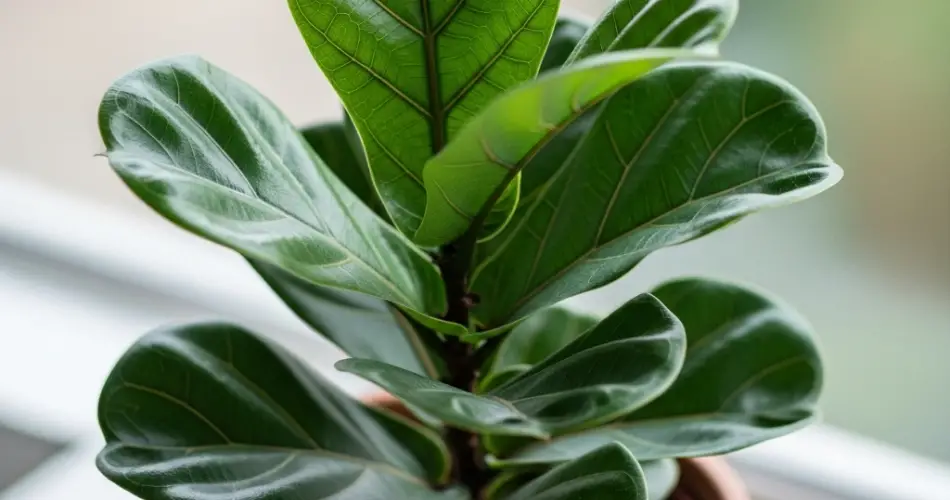The fiddle leaf fig (Ficus lyrata) is known for its striking, violin-shaped leaves and elegant presence in homes and offices. While it’s typically grown as a decorative plant, many indoor gardeners aim to maximize its size, fullness, and overall health to get the most out of this lush tropical tree. With the right care, your fiddle leaf fig can thrive and grow like a showpiece—tall, vibrant, and full of glossy leaves.
Whether you’re new to houseplants or simply want to elevate your care routine, this guide will walk you through how to grow a fiddle leaf fig like a seasoned pro, focusing on yield in terms of leaf production, height, and overall visual impact.
1. Choose the Right Pot and Soil
Start with a well-draining pot that gives your fiddle leaf fig enough room to grow. A pot that’s just a few inches larger than the root ball will help avoid waterlogging while giving the roots space to spread. Always ensure the container has drainage holes.
Use a rich but airy soil mix. A high-quality potting mix combined with a bit of perlite or orchid bark is ideal. This allows for moisture retention without suffocating the roots—crucial for a tropical plant that doesn’t like wet feet.
2. Light: Give It a Bright, Front-Row Seat
Fiddle leaf figs need plenty of bright, indirect sunlight to thrive. Ideally, place it near a south- or east-facing window where it will receive at least 6 hours of bright light daily. Direct sun is acceptable if filtered through sheer curtains—this mimics the dappled light it receives in its native environment.
If your plant isn’t getting enough light, it may become leggy, drop leaves, or stop growing altogether. Rotate it every couple of weeks so all sides receive light evenly and grow symmetrically.
3. Master the Art of Watering
Overwatering is the most common issue for fiddle leaf figs. Let the top 2–3 inches of soil dry out before watering again. When you do water, soak the soil thoroughly until water drains from the bottom. Empty any excess from saucers right away to prevent root rot.
In the winter months, reduce watering frequency. Watch the leaves—wilting, browning edges, or dropping leaves can all be signs of improper watering, either too much or too little.
4. Feed Strategically
To boost growth and maximize leaf yield, fertilize during the growing season (spring through early fall). Use a balanced, water-soluble fertilizer with an N-P-K ratio like 10-10-10 or 3-1-2, diluted to half strength. Feed your plant every 4–6 weeks.
In the winter months, stop feeding, as the plant enters dormancy and its growth slows naturally.
5. Prune for Shape and Growth
Strategic pruning can encourage your fiddle leaf fig to grow bushier and more vigorous. Use clean, sharp shears to trim back the top stem just above a node (where a leaf meets the stem). This will stimulate branching and new growth, making your plant appear fuller.
You can also remove damaged or lower leaves to help the plant redirect energy toward healthy, new ones. Pruning is best done in spring or early summer when the plant is actively growing.
6. Clean the Leaves Regularly
Dust builds up on large fiddle leaf fig leaves, blocking light and reducing photosynthesis. Wipe them gently with a damp cloth every couple of weeks. This not only improves light absorption but also gives the plant a healthy, glossy appearance.
7. Support Proper Humidity and Temperature
Fiddle leaf figs prefer warm, humid environments. Aim to keep indoor temperatures between 65°F and 75°F (18–24°C). Avoid cold drafts and sudden temperature drops.
Boost humidity with a humidifier, grouping plants together, or placing a tray of water and pebbles nearby. Leaf curling or crispy edges can be a sign the air is too dry.
8. Repot When Necessary
If your plant’s roots begin circling the pot or growing out the bottom, it may be time to repot. Generally, this should happen every 1–2 years in the spring. Choose a pot 2–3 inches wider than the current one and refresh the soil to maintain nutrient levels.
9. Troubleshoot Like a Pro
-
Brown spots: Could indicate fungal infection or overwatering. Improve drainage and adjust watering habits.
-
Drooping leaves: Often due to inconsistent watering or a sudden change in light.
-
No new growth: Consider more light, gentle pruning, or a fertilizer boost during active seasons.
Final Thought
Maximizing the yield and beauty of your fiddle leaf fig doesn’t require a green thumb—just a good understanding of its needs. With the right combination of light, water, pruning, and care, your fiddle leaf fig can grow tall, full, and vibrant, becoming a true focal point in your home. By treating it like a seasoned gardener would, you’ll enjoy a lush indoor tree that rewards you with impressive growth year after year.



